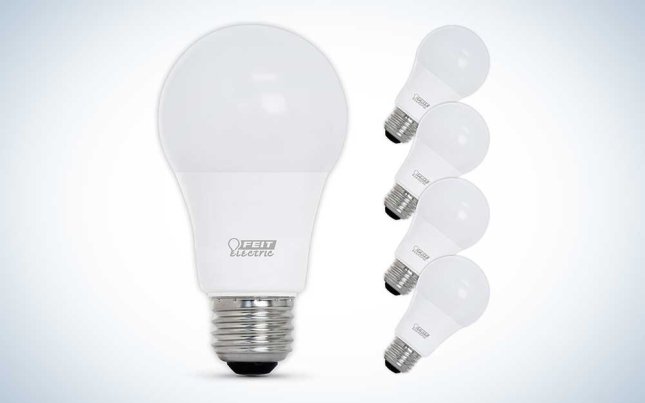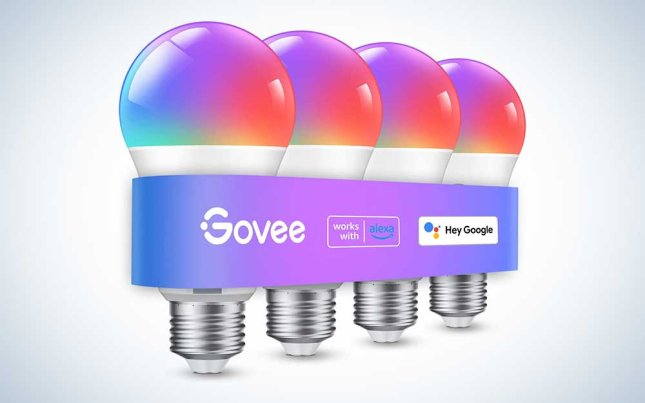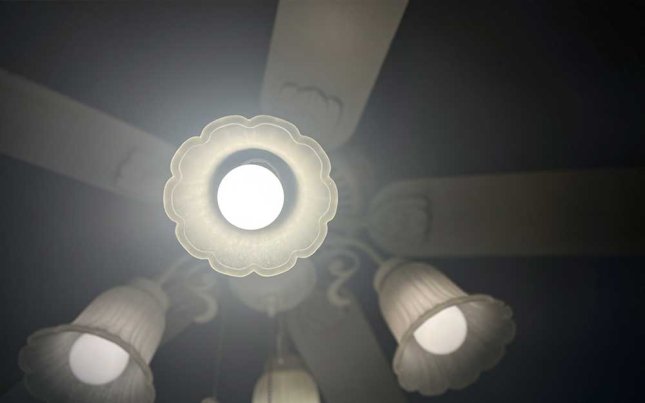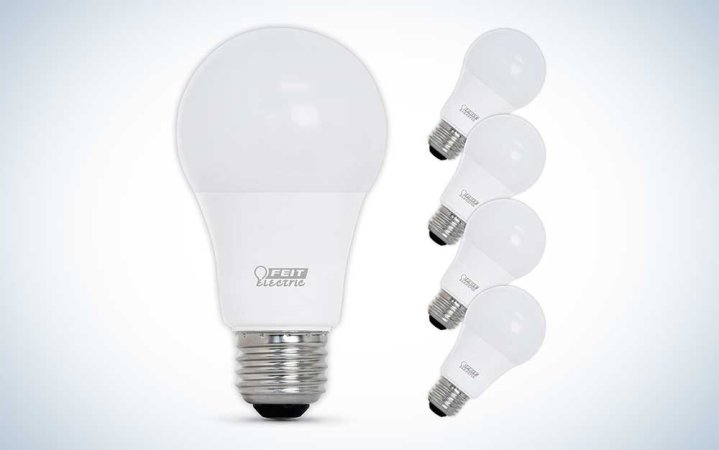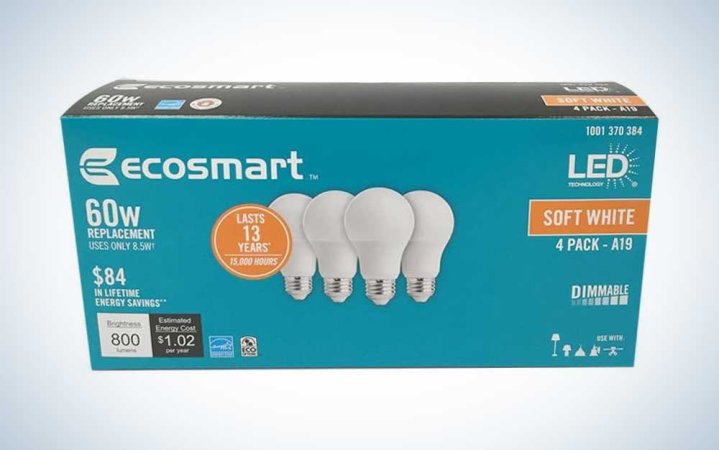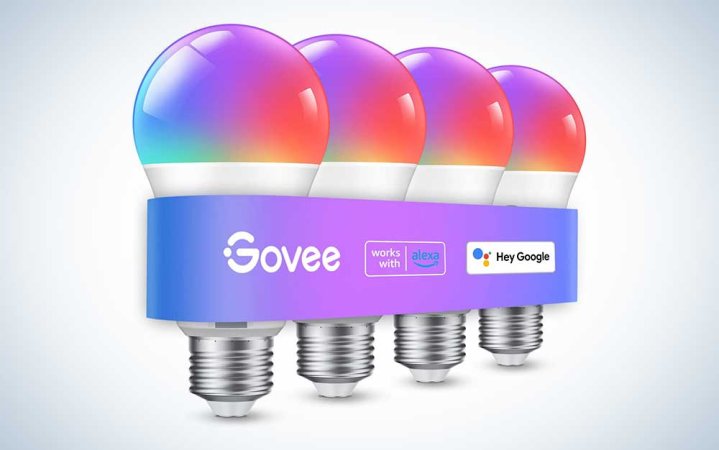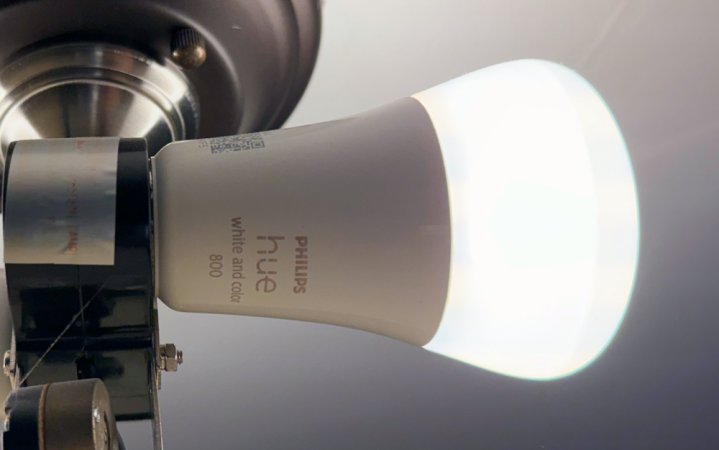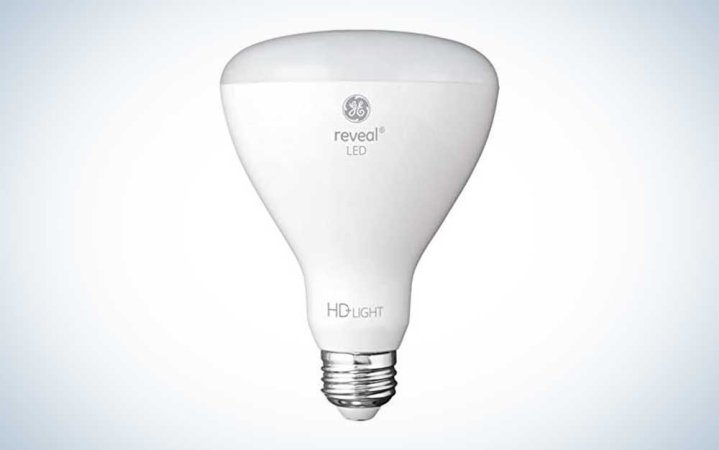We may earn revenue from the products available on this page and participate in affiliate programs. Learn more ›
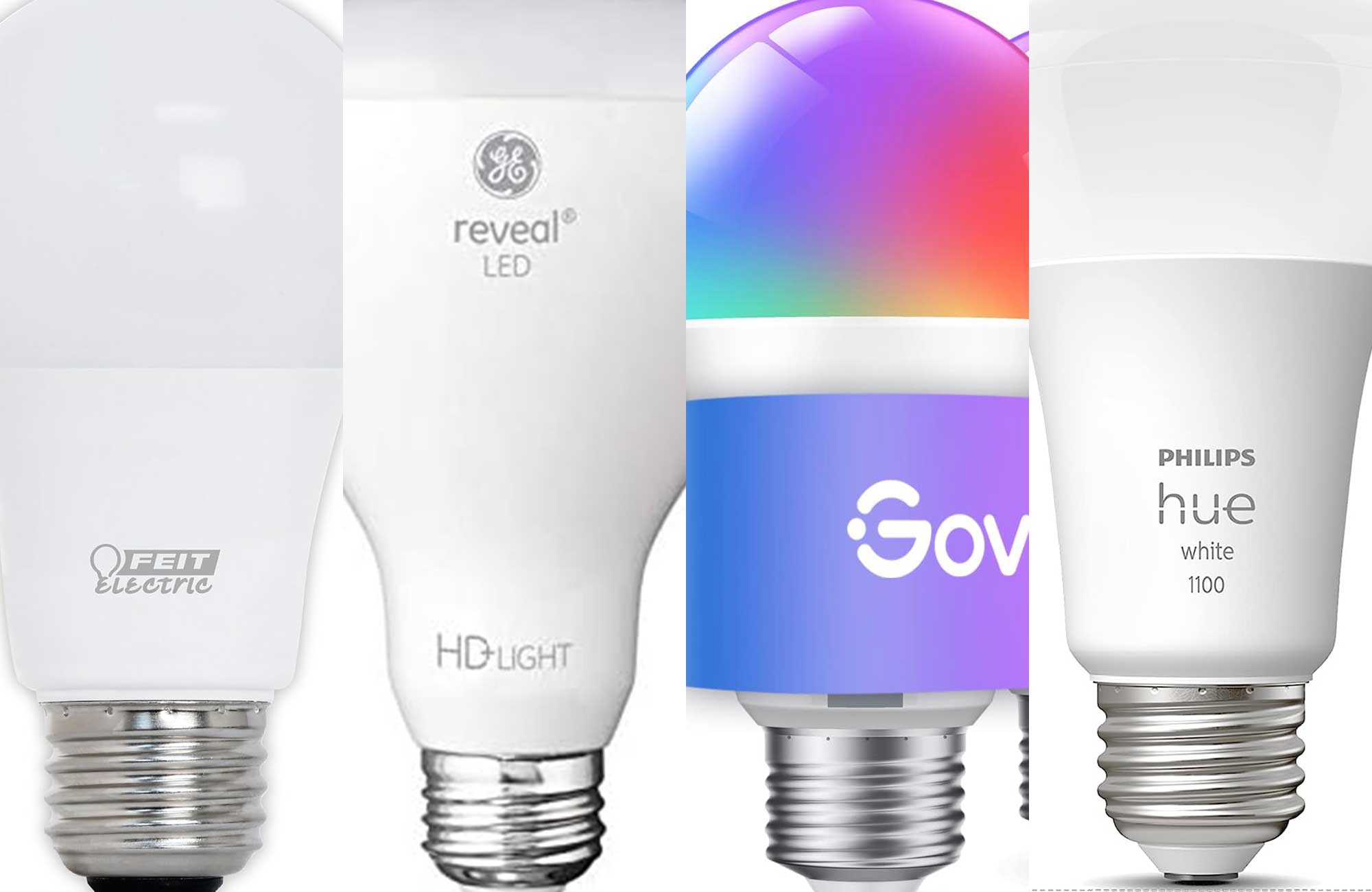
How many PopSci writers does it take to change an LED lightbulb? Per our own very scientific observations, just two: One to stand on a stool/chair/anything that’s not a ladder, and another to spot and catch the lightbulb changer in case they fall. Our worker’s compensation only goes so far. All jokes aside, LED light bulbs are less of a headache than incandescent and fluorescent ones—seriously. They’re less likely to flicker, not going to buzz or hum, and their brightness varies from bright daylight to soft, warm white. Our favorite part about them? You don’t have to change them every six months or worry about your electric bills going through the roof after accidentally falling asleep with the light on. The best LED light bulbs—such as the ones you’ll find below—are eco-friendly, long-lasting, and come in all sorts of color temperatures.
- Best overall: Feit Electric A19 LED Light Bulb
- Best dimmable: EcoSmart 60W Equivalent Soft White A19 Energy Star + Dimmable LED Light Bulb
- Best color-changing: Govee Smart Light Bulbs
- Best smart: Philips Hue Smart Light
- Best recessed: GE Reveal 6-Pack 65 W R30 LED Light Bulbs
- Best value: SYLVANIA ECO LED Light Bulb
How we chose the best LED light bulbs
There are many kinds of lightbulbs in this world—so many that the permutations of color, bulb shape, and wattage would shock Benjamin Franklin so much that his gout flares up. I mean, twinkle lights are great, but sometimes you need to see where you set something down more than set the mood. For consistency’s sake, we only considered A19 LED lightbulbs (with a few exceptions) and ensured they were at least 800 lumens, the 60W equivalent to their environmentally antagonizing incandescent siblings. We also ensured each bulb came in different color temperatures so you can deck your entire home in your favorite bulbs. We tested them in our homes and researched critical and consumer favorites, consulting peer reviews and user recommendations for a more democratic look.
The best LED light bulbs: Reviews & Recommendations
Starting August 1, 2023, incandescent lightbulbs, with a few exceptions, are banned in the United States. One of our choices can help you make the switch and even inspire an entirely new lighting theme in your house … a light might even go off in your head, you might say.
Best overall: Feit Electric A19 LED Light Bulb
Specs
- Wattage equivalent: 60 watts
- Bulb shape: A19
- Color temperature: 2700K, 3000K, 5000K
Pros
- Versatile
- UL-listed
- Dimmable
- Damp rated
Cons
- Some reviews mention flickering and trouble with dimming
If you don’t need the bells and whistles like Wi-Fi and Bluetooth connectivity, the Feit A19 800-lumen bulb gives you the basics with the added bonus of dimming. It only uses 8.8 watts of energy and emits no ultraviolet light, which means you can use it in rooms with artwork and photographs. With its frosted bulb and A19 shape, it looks just like a regular incandescent bulb. It’s damp-rated, so you can feel good about using it in steamy bathrooms.
It comes in three color temperatures: 2700K, 3000K, and 5000K. I like using 3000K for bathrooms and kitchens, and 2700K for the living room and bedrooms, but all color temperatures are accurate. The bulbs can last 25,000 hours, which is a testament to their durability and quality. They’re UL-listed, Energy Star-rated, and FCC and CEC Title 24 compliant. That’s all code for “safe, won’t kill you, and are efficient as advertised.”
Reviews note some issues with dimming and flickering, but that could be caused by faulty electrics and old dimmers that aren’t compatible with new lightbulbs. If you stand by your sockets and switches, you’ll be more than happy with these Feit lightbulbs that can do it all.
Best dimmable: EcoSmart 60W Equivalent Soft White A19 Energy Star + Dimmable LED Light Bulb
Specs
- Wattage: 60 watts
- Bulb shape: A19
- Color temperature: 2700K
Pros
- Dimmable
- Energy Star-rated
- Variety of color different color temperatures
Cons
- Only available on Amazon via third-party
- Last 15,000 hours
These 60-watt replacement bulbs are some of the best for dimmer switches. The bulbs are compatible with most dimmer switches and in omnidirectional indoor lighting situations. They only produce 8.5 watts and are Energy Star-rated, meaning they’re as efficient as advertised. They’re also available in other color temperatures, which you can find in separate listings.
However, these bulbs are only available on Amazon via a third-party seller and not from the manufacturers themselves. This means you may not meet the manufacturer’s warranty if you need to report a problem. They also only last 15,000 hours, meaning they won’t last as long as other LED light bulbs. Make sure your dimmer switch is compatible with the bulb’s wattage, or else you won’t be able to take advantage of their dimming capabilities.
Best color-changing: Govee Smart Light Bulbs
Specs
- Wattage equivalent: 60 watts
- Bulb shape: A19
- Color temperature: N/A
Pros
- Works with Alexa and Google voice assistants
- App-controlled
- Syncs with music
Cons
- Expensive for a light bulb
- Risk connectivity loss
If boring white bulbs make you groan and you want to light each room in a different shade of the rainbow, you can do so with these Govee lights without completely breaking the bank. You can DIY a plethora of colors or choose from 54 preset lighting scenes. If you’re throwing a party, these bulbs change color and brightness depending on the music you’re playing (one reason we’re also a fan of their LED strip lights and TV backlight kits). You can control the lights via the Govee app or via your favorite smart-home voice assistant like Alexa and Google.
You can also set a timer on the bulb to DIY your own sunrise alarm clock. Like other smart alarm clocks on the market, the Govee bulbs can brighten when you take up and gradually dim before you go to bed. It’s expensive for a light bulb, and you risk disconnecting from the app and being stuck with red light for longer than you care.
Best smart: Philips Hue Smart Light
Specs
- Wattage equivalent: 75 watts
- Bulb shape: A19
- Color temperature: N/A
Pros
- Smart button for additional control
- Compatible with voice assistants
- Lighting presets and custom lighting
Cons
- Expensive for a light bulb
- Smart Button doesn’t dim
The Philips Hue light bulbs are our best overall pick for the best smart lighting and it gets better if you opt for the company’s Starter Kit, which includes a hardware hub that can control up to 50 bulbs, a Smart Button with a mounting plate to control your bulbs with a good ol’ fashioned switch, and three Hue White and Color smart light bulbs.
If you’re cool with controlling your lights via the Philips Hue app or Apple, Amazon, and Google voice assistants. Each bulb is dimmable and customizable, with 16 million color combinations to choose from. Since it connects to your Wi-Fi router and, therefore, the Internet of Things, you don’t even need to be home to control your lighting. That’s perfect if you’re like me and your security measures involve keeping a light on so bad actors think someone is home. It is pricier than other options like the Govee, but it’s a great, reliable place to get started with smart lighting.
Best recessed: GE Reveal 6-Pack 65 W R30 LED Light Bulbs
Specs
- Wattage equivalent: 65 watts
- Bulb shape: R30
- Color temperature: 2700K
Pros
- Works with a dimmer switch
- Can be used indoors and out
- Mercury-free
Cons
- Only lasts around 15,000 hours
If you use recessed lighting in your home, a recessed bulb is the best choice for getting a smooth, clean look. A19, for lack of better phrasing, just looks goofy in a recessed socket. This one only uses 9 watts and can work with a dimmer switch. It’s warmer at 2700K, but there are other color temperature options available, like Relax and Refresh. You can use these recessed bulbs in your home or for your floodlights outdoors. They’re free of mercury, but they only last 15,000 hours, which is low compared to other LED light bulbs out there.
Best value: SYLVANIA ECO LED Light Bulb
Specs
- Wattage equivalent: 60 watts
- Bulb shape: A19
- Color temperature: 2700K, 5000K
Pros
- Lots of color options
- Come in packs larger than 4
- Perfect for someone who just wants a light bulb
Cons
- Non-dimmable
- No smart capabilities
I am but a simple, frugal woman with a particular lightbulb taste. Do not give me a daylight-bright bulb and dare to put it in my bedroom. That is a bulb meant for the kitchen! I can’t lie; I was rather dismayed when I found out incandescent bulbs would be leaving shelves. What would I do without the warm glow in my bedroom ushering me to relaxation? It turns out the switch was no big deal, and I would just have to pay attention to the color temperature listed on the box. I learned this lesson the hard way after buying bulbs that were too cool in the spaces I placed them in, and I was too stubborn to change them out and waste a bulb.
When I moved into my new apartment, half of the light bulbs were burned out or on the verge of doing so. I had lots of bulbs to replace and craved something warm, so I ultimately went with these SYLVANIA ECO LED light bulbs. They come in all sorts of color temperatures, sizes, and wattages, but I personally picked up the 8-count 60W bulbs in Soft White. I don’t like when lighting is too warm (it wrecks my selfies and product images), and the Soft White is just where I like my light to be: Not so bright that I feel like I’m at the doctor’s and not so orange that everything I own becomes awash in a tangerine dream. I even went a little crazy and put them in the kitchen, where I could have gotten away with using a Daylight or Bright White bulb.
This lightbulb doesn’t have bells and whistles like dimming, color-changing capabilities, or Wi-Fi connectivity. That’s perfectly fine by me, a person who gets frustrated at robot vacuums and still operates a 2012 MacBook Pro (with disc drive, I might add). If this makes me a Luddite, well, just crucify me with some USB-C cables and the latest iPhone.
What to consider when buying the best LED light bulbs
We’ve all had annoying lightbulbs that buzz, flash, or aren’t the correct color temperature for the room (looking at you, old blinking and too-bright fluorescent light bulbs in the office and at school). Buying the right lightbulb can change an entire room’s mood, vibe, and can even affect your own. Here’s what you need to know before that “add to cart” click:
Usage
The use-case will help you decide what shape and color temperature. If you’re using your LED bulbs for overhead lighting, 800-1100 lumen (more on that below) bulbs will work perfectly. If you’re shopping for recessed lighting like ceiling lights or track lights, something around 700 lumens is more appropriate. You should look for an LED lightbulb in the 700-1300 lumen range for an outdoor floodlight.
Brightness and temperature
For LED light bulbs, brightness is measured in Lumens. Watts are also associated with brightness, but are more an indicator of energy use. If you’re making the switch from incandescent to LED, here are some conversions for popular wattages:
- 800 lumens replaces a 60-watt bulb
- 1,000 lumens replaces a 75-watt bulb
- 1,600 lumens replaces a 100-watt bulb
Usually, LED lightbulb manufacturers will include the “wattage” on an LED bulb so you don’t have to do the mental math yourself
Color temperature is measured in Kelvins (K). The entire Kelvin scale ranges from 1,000 to 10,000, but commercial and residential lighting ranges from 2000K-6500K. There are three main Kelvin tiers you’ll come across:
- 2700K: Usually advertised as “soft white” or “warm white.”
- 3000K: Usually advertised as “cool white.”
- 5000K: Usually advertised as “bright white” or “daylight.”
Dimming
Not every LED light bulb will work with a dimmer switch. Either the bulb itself is not compatible with a dimmer, or your current dimmer isn’t rated for LED light bulbs. If the packaging on your LED bulb says it’s dimmable, and you have a dimmer that’s rated for LED light bulbs, congrats! You have a winning combination. Some LED light bulbs have Wi-Fi and Bluetooth connectivity and thus can be dimmed using your phone.
FAQs
There are a few things to look at in an LED light. You want to ensure all light bulbs show the same color temperature. Differences in temperature across bulbs can indicate a poor LED. Look for ENERGY STAR certification to verify energy efficiency. LED light bulbs also shouldn’t flicker or feel flimsy. Check for UL or DLC certifications, and double-check reviews for customer satisfaction.
It depends on what room you’re in. Warmer colors—2,200-3,000 Kelvins—are good for bedrooms, living areas, and anywhere you want to relax. Cooler colors—5,000-6,500 Kelvins—are best for kitchens, offices, and other workspaces. Or, you can defy all conventions/remind yourself you have free will and do what you want.
Hands-down LED light bulbs. They produce less heat, are more energy efficient and eco-friendly, have a longer lifespan, are durable, don’t emit UV rays, can be used in all sorts of design applications, can operate in hot or cold temperatures, are better at dispersing light, can be used with a low voltage power supply … the list goes on.
Final thoughts on the best LED light bulbs
- Best overall: Feit Electric A19 LED Light Bulb
- Best dimmable: EcoSmart 60W Equivalent Soft White A19 Energy Star + Dimmable LED Light Bulb
- Best color-changing: Govee Smart Light Bulbs
- Best smart: Philips Hue Smart Light
- Best recessed: GE Reveal 6-Pack 65 W R30 LED Light Bulbs
- Best value: SYLVANIA ECO LED Light Bulb
Since incandescent bulbs are dwindling on shelves, switching to an LED light bulb isn’t just a necessity; It’s a small change that makes a big impact. LED light bulbs help you save on electric bills, let you spend more time sitting in your living room than changing the lightbulbs in it, and even assist in creating a vibe shift through a color change. Talk about having a bright idea.
